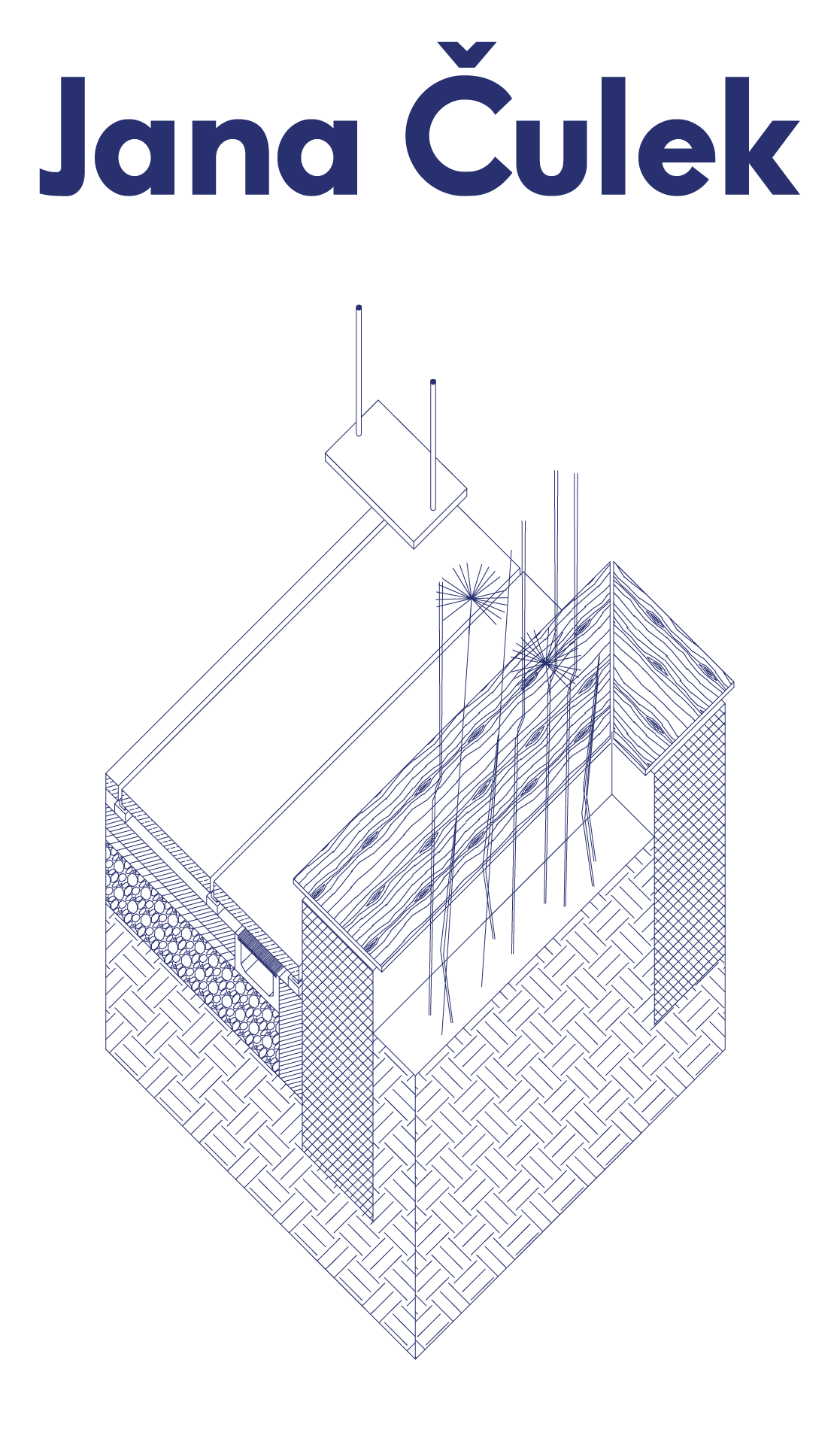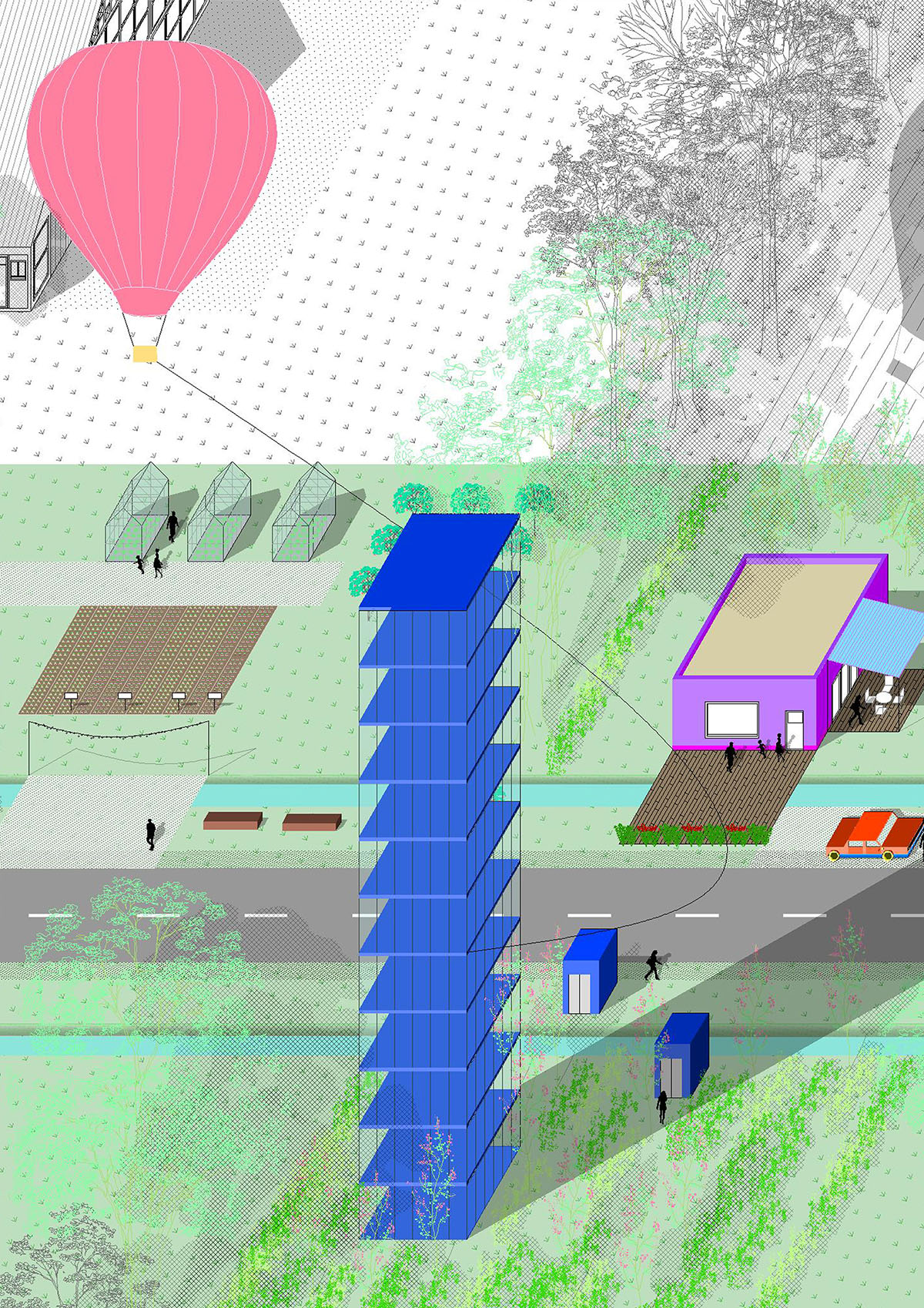N oordoostpolder consists mostly of agricultural land. Every piece of land has been planned and engineered. There is no real nature. The villages are planned in a way that (should) accommodate all the laborers needs. No area is planned for the farmers. This is an anomaly. The laborers play in the villages, but where do the farmers play? Farmer’s settlements are clustered in groups in order to give a notion of density to the users, to justify the vast emptiness that surrounds them. Each settlement is placed in an enclosed “box” of trees. The size of these “boxes” once depended on the size of land that needed to be processed. Today this connection seizes to exist. Once the “boxes” contained only housing and agricultural buildings for the farmers, but today they can contain anything. The settlement clusters are repeated indefinitely throughout the endless grid, separated from each other by large areas of agricultural land. The villages seemingly offer substance and density, for both the farmer and the laborer, but these are nonexistent in the villages. The distances are too great and the areas of gravity are too small for the farmers to use this content. The collective emptiness planned for play is not used. The ratios are wrong. Emptiness dominates the Noordoostpoler.
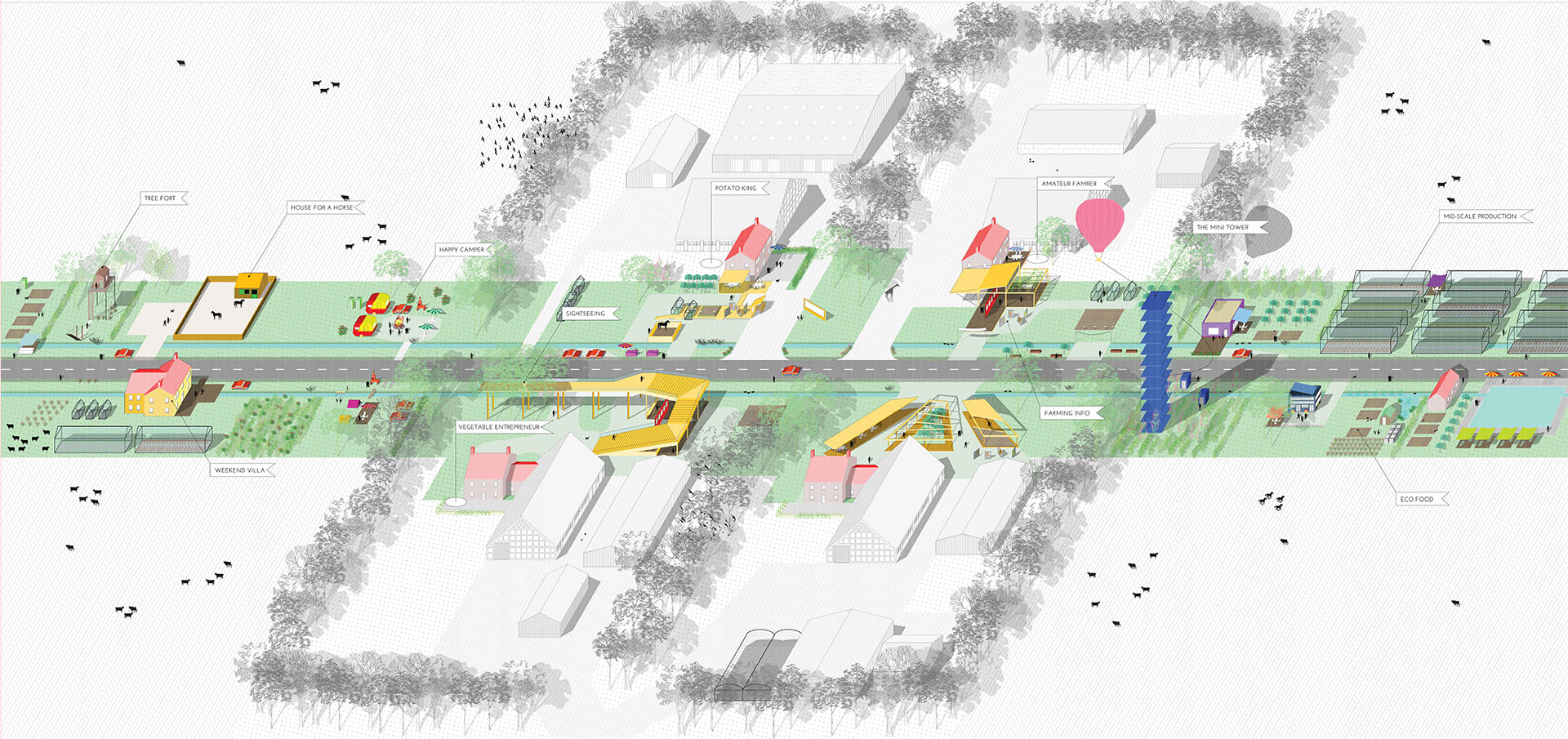
By introducing a system which repurposes a 20 meter deep strip of agricultural land adjacent to the road to become an area where smaller plots can be rented out for private agriculture, weekend homes and leisure time, a much needed fluctuation of people in the farm areas of Noordoostpolder is achieved. By allowing an opportunity for people outside the immediate farm area to periodically visit their small rented land gives the people of Noordoostpolder a chance to meet and socialize with new people on a temporary basis, without permanently imposing on their regular life cycle.
The same 20 meter strip is extended through the tree boxes as well, removing the tree barrier in its width and thus making the inner area more visible and attractive. On the plots themselves, a “transitional area” is formed which is implemented as an object which bridges the gap from public to private on the plots themselves. This area will consist of different programs and structures from sale and promotion of agricultural product, agricultural exhibition and education areas as well as areas for receiving guests and relaxing, food tasting, etc… Depending on the specific crop the farmer family produces and the time of year that this occurs, different areas of the polder could be more active than others which will introduce a much needed variety within the polder system.
By implementing a new, more flexible system into the rigid structure of the Noordoostpolder, new life possibilities arise which tends to improve the overall life of the existing occupants.
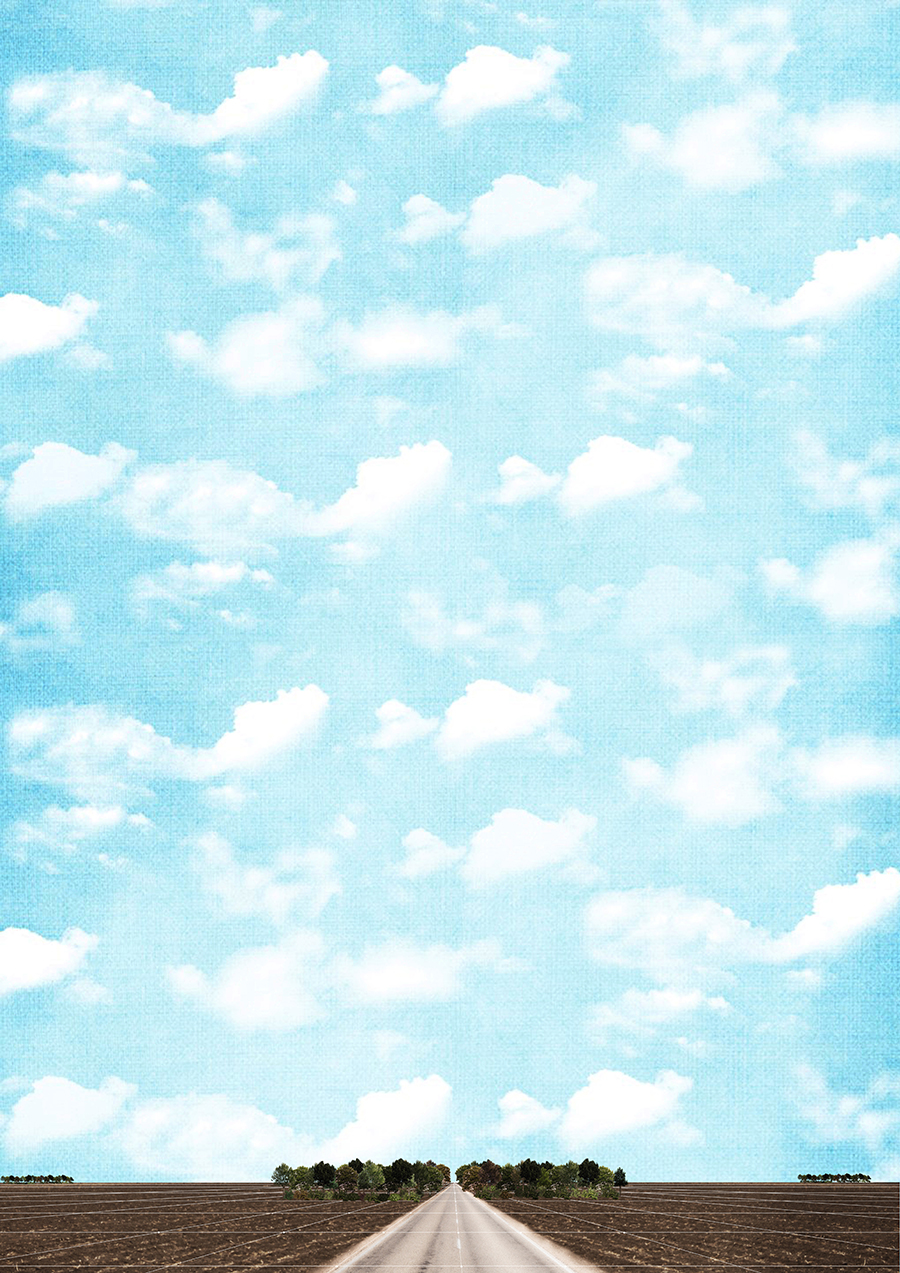
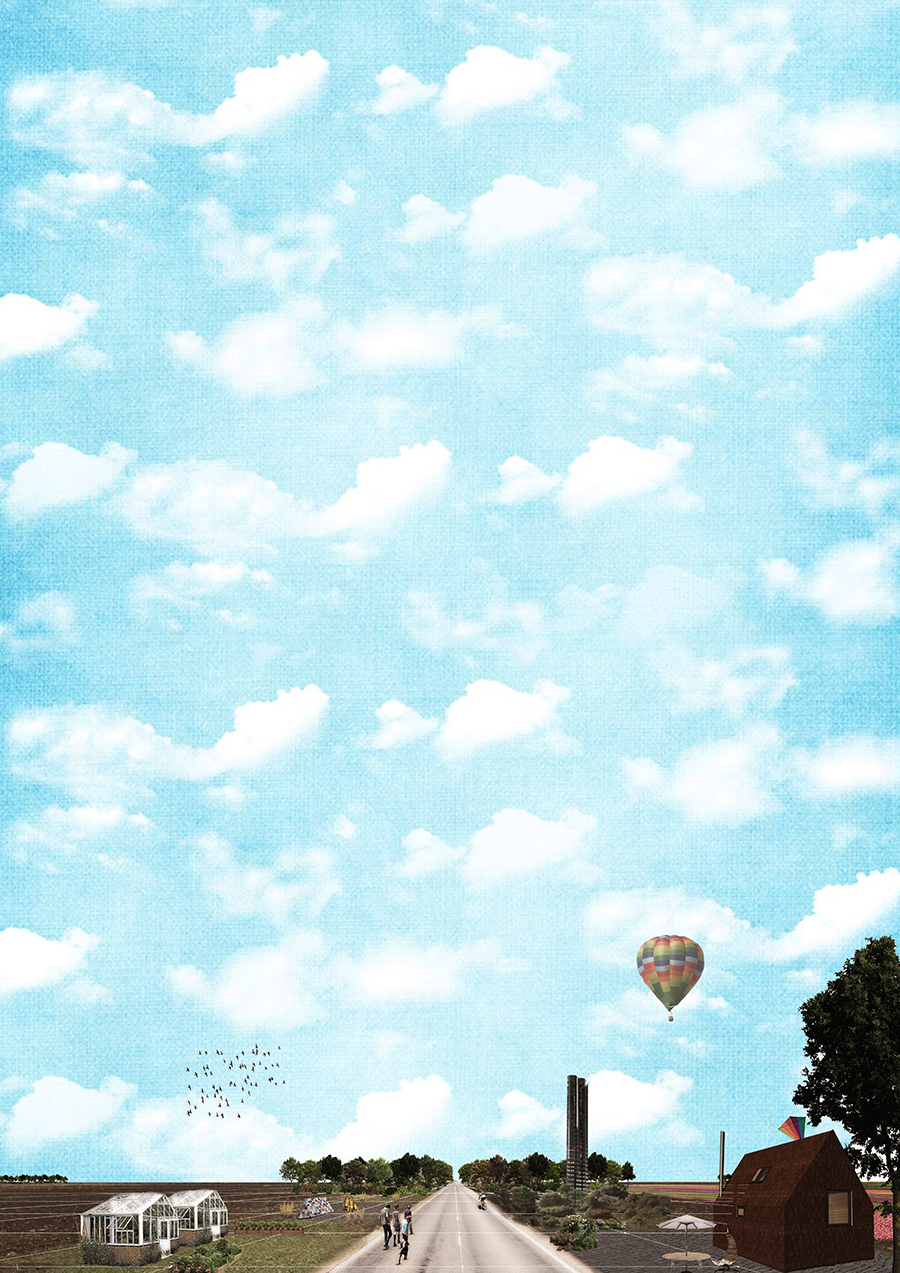
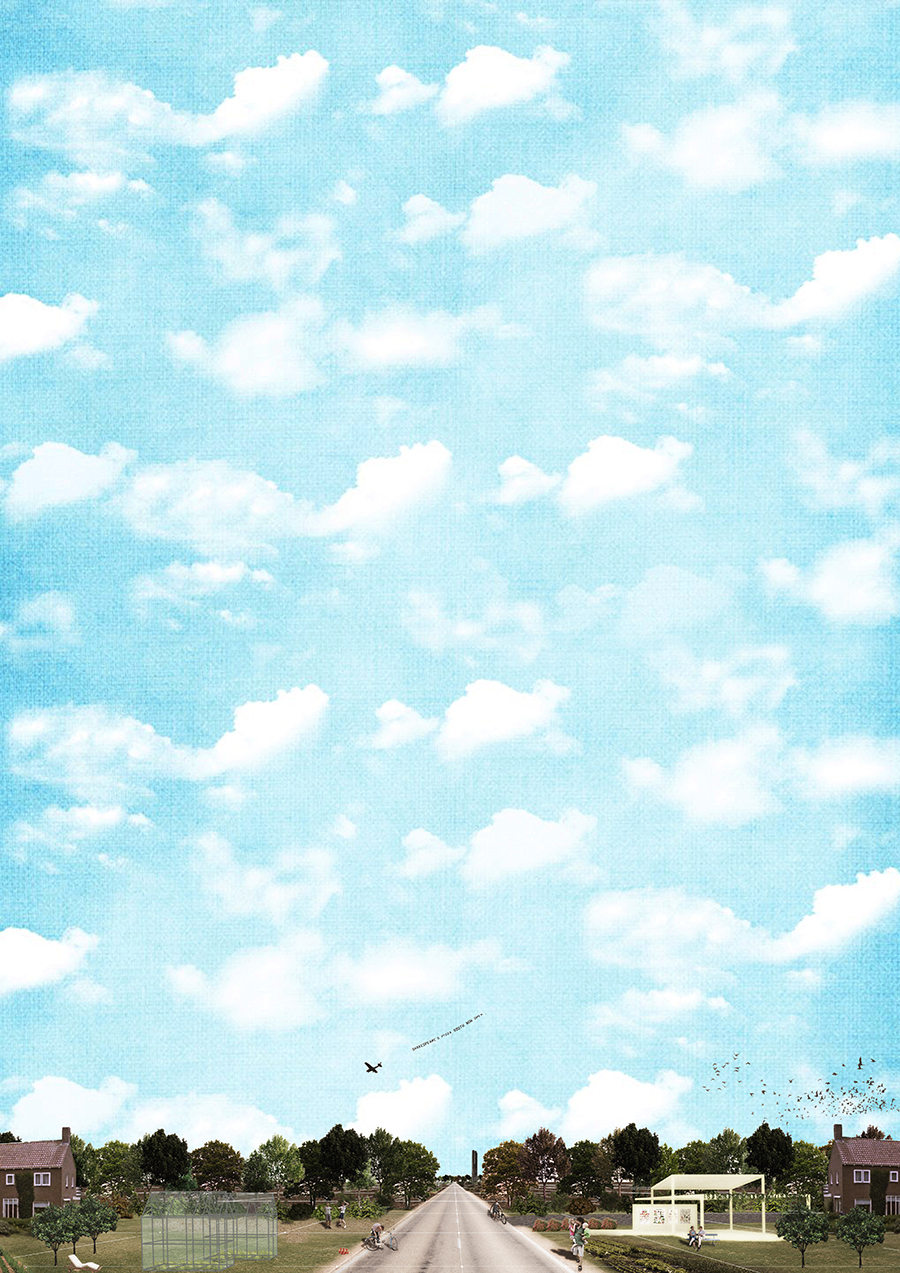
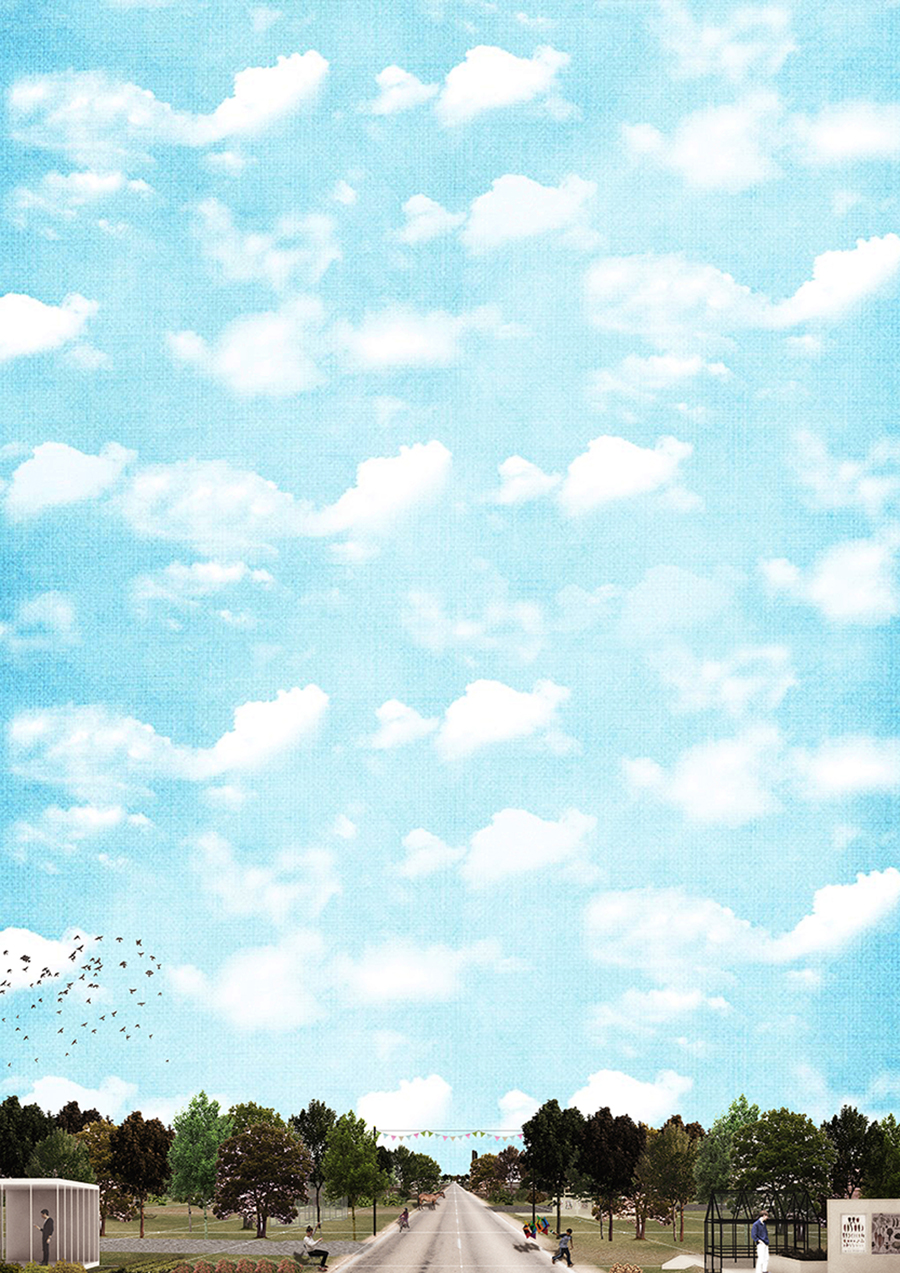
Noordoostpolder, 2014
